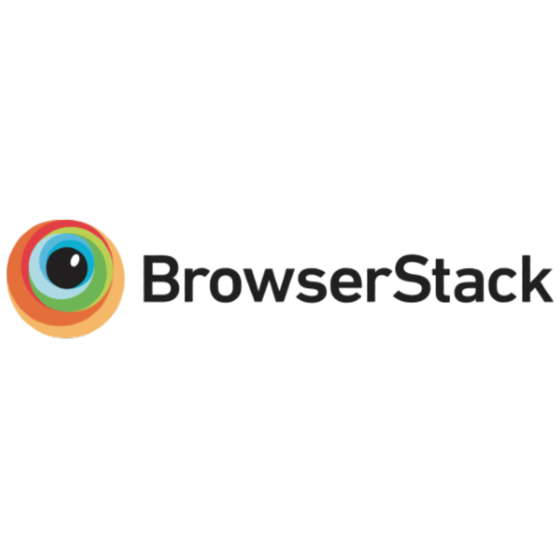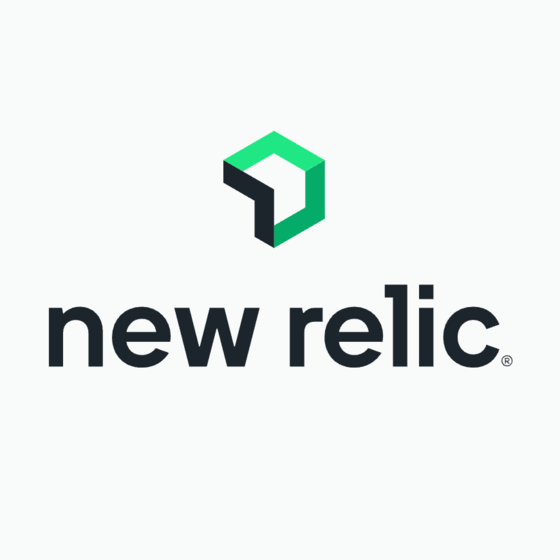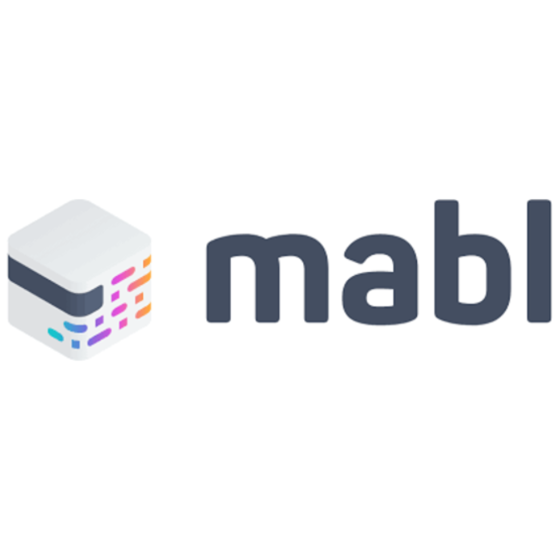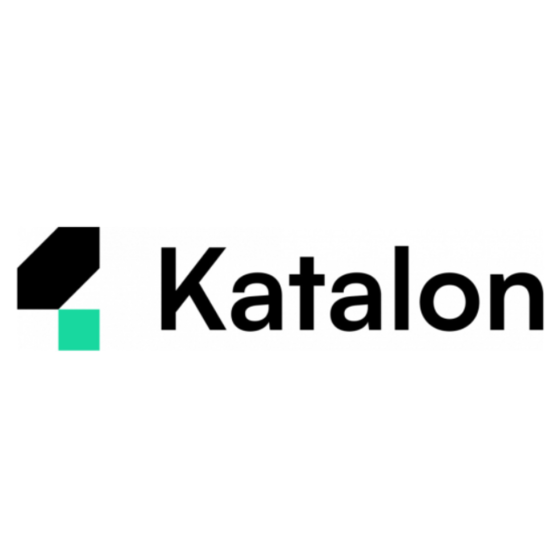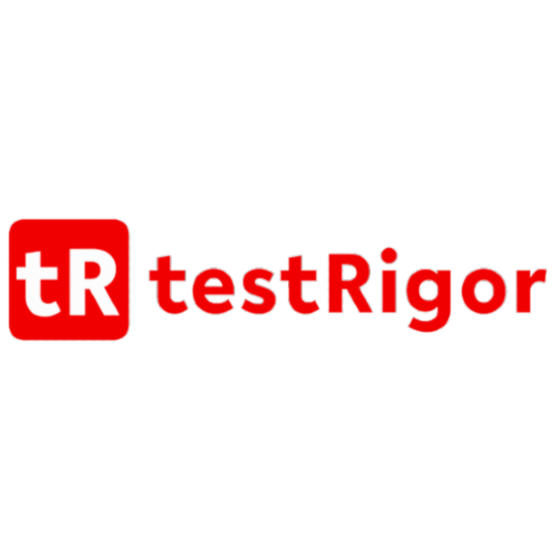10 Best Web Automation Tools Shortlist
Here are the top 10 web automation tools I’d like to highlight out of the 18 I cover in this article:
Our one-on-one guidance will help you find the perfect fit.
There are seemingly countless web automation tools available, so figuring out which is best for you is tough. You want to automate actions within a web browser or web application but need to figure out which tool is the best fit. I've got you! In this post I make things simple, leveraging my experience using dozens of different web automation software to bring you this shortlist of the best web automation tools.
Why Trust Our Web Automation Tool Reviews?
We’ve been testing and reviewing web automation tools since 2021. As QA software testers ourselves, we know how critical and difficult it is to make the right decision when selecting software.
We invest in deep research to help our audience make better software purchasing decisions. We’ve tested more than 2,000 tools for different use cases and written over 1,000 comprehensive software reviews. Learn how we stay transparent & our web automation tools review methodology.
The Best Web Automation Tools Summary
| Tool | Best For | Trial Info | Price | ||
|---|---|---|---|---|---|
| 1 | Best end-to-end testing solution with in-house QA experts for support | Free demo available | Pricing upon request | Website | |
| 2 | Best for automated visual testing | Free trial available | From $15/user/month (billed annually) | Website | |
| 3 | Best for data-driven Engineers | Free plan + demo available | Pricing upon request | Website | |
| 4 | Best automation tool for end-to-end API tests | Free trial available + free demo | Pricing upon request | Website | |
| 5 | Best for self healing tests | 14-day free trial + free demo | From $175/month | Website | |
| 6 | Best specialized IDE interface | Free plan available + free demo | From $183/user/month | Website | |
| 7 | Best for AI-driven test maintenance | 14-day free trial | From $212/month | Website | |
| 8 | Best AI-driven test automation built on Playwright | 3-month free trial | Pricing upon request | Website | |
| 9 | Run tests on hundreds of real devices in the cloud | Free trial available + free demo | From $83/month | Website | |
| 10 | Best for writing stable automated test cases in plain English | Free trial available + free demo | From $300/month (billed annually) | Website |
-

Docker
Visit WebsiteThis is an aggregated rating for this tool including ratings from Crozdesk users and ratings from other sites.4.6 -

Pulumi
Visit WebsiteThis is an aggregated rating for this tool including ratings from Crozdesk users and ratings from other sites.4.8 -

GitHub Actions
Visit Website
Best Web Automation Tool Reviews
Below, you’ll find a brief description of each web automation tool to showcase their best use cases, some noteworthy features, and screenshots of the user interface.
QA Wolf
Best end-to-end testing solution with in-house QA experts for support
QA Wolf is an end-to-end testing automation solution that comes with an expert team of QA engineers to write, run, and repeat all your critical tests. More than a tool, it is a service that takes the burden of in-house QA work off your shoulders. They are currently used by companies like Gumroad, MainStreet, Mailchimp, Replay, and Padlet.
QA Wolf works with you to build end-to-end tests that will take you to 80% coverage in under four months. During that time, you get full visibility over the progress as they build out your testing plan using Playwrite under the hood. The best part for me? The code they develop is yours, so you can take your code anywhere, even if that means away from QA Wolf.
Key features include end-to-end test coverage, a comprehensive test plan strategy, failure triaging and test maintenance, high-quality bug reports, fast parallel test run infrastructure, and an easy-to-use app for real-time status updates.
QA Wolf integrates with tools like Stripe, Salesforce, email providers, Auth0, SMS, Github, and even more options through their flexible API.
You can schedule a demo to find out more about pricing.
BrowserStack’s cloud platform allows QA teams to conduct comprehensive web and mobile testing. QAs can also verify the cross-browser compatibility of applications to deliver a unified end-user experience. With tests for functionality, performance, and visual appeal, BrowserStack helps developers send bug-free products to market faster.
Percy is BrowserStack’s automated visual testing product that development teams can integrate into their existing CI/CD pipeline. Visual testing allows QAs to catch visual regressions before they reach end-users. Percy makes this process easier with its ability to capture screenshots, make pixel-by-pixel comparisons to your UI’s baseline, and notify you of defects.
BrowserStack supports integrations with automation frameworks like Appium and Espresso. Software teams can also connect to popular CI/CD tools like Jenkins and Bamboo.
BrowserStack offers a variety of products with different pricing structures. New users can also sign up for a free trial.
New Relic is an all-in-one observability platform that helps you test, monitor, and improve your web applications by simulating user journeys across devices and throughout the application lifecycle.
New Relic's Synthetic Monitoring is a feature that allows you to monitor your software by simulating user behavior in various ways, thus helping to ensure that your software is performing optimally. One thing you can do is simulate different OS users, browsers, and devices so you can see which one is underperforming. Besides this, you can also see low-performing entities, URLs, APIs and services that help you take a more proactive approach to building apps.
Additionally, you can build for peak performance by adding synthetic monitoring to build automation and CI/CD pipelines. And if you think following up on alerts is difficult, New Relic has an AI agent that helps automatically detect issues and auto-generate tickets across AIOps.
New Relic integrates with over 600 applications within the categories of application monitoring, infrastructure, security, traffic simulation, logging, AWS, Azure, Google Cloud Services, open-source monitoring, machine learning ops, and Prometheus.
High-velocity software teams use mabl to create, run, and analyze functional UI and API tests. mabl offers low-code test automation, enabling team members of all skill levels to develop automated tests. The software’s intuitive user interface makes it easy to create tests while navigating through your application, just like real-world users.
mabl is best known for its API automation testing capability. QA teams can validate status code responses, headers, and body values without interacting with an application’s UI. With access to API testing, you can ensure your software’s reliability, security, and performance throughout development.
mabl integrates with most tools development teams utilize in their workflows, including Bamboo, Jira, Git, and Jenkins.
Subscriptions are available for startups and enterprise-level organizations, with pricing available upon request. Businesses can also try mabl free for 14 days.
Endtest is a cloud-based web automation tool that streamlines the software testing process by offering a codeless environment for creating, executing, and managing tests. With its intuitive interface and extensive range of features, Endtest enables users to effortlessly create and run automated tests across web, mobile, and desktop applications.
There are a few standout features that I think really set Endtest apart. The first is the codeless test creation. You can create complex tests without writing a single line of code, which is a huge time-saver. Endtest also provides the capability to record video during test execution, allowing users to visually capture the entire testing process for analysis and documentation purposes.
Endtest's self-healing tests are an advanced automation feature that proactively identifies and resolves issues during test execution. These tests exhibit autonomous anomaly detection and automatic corrective actions, ensuring uninterrupted test flow without human intervention.
Integrations include Jenkins, GitLab, SauceLabs, BrowserStack, Bamboo, Heroku, Bitbucket, TravisCI, CircleCI, TeamCity, Azure DevOps, and other similar apps.
Endtest costs from $175/month (1-5 parallel tests).
Katalon Studio is a test automation tool for web interfaces, APIs, mobile platforms, and Windows desktop applications. It primarily functions as a tool for QAs to create and reuse automated tests of UI elements, like pop-ups and iFrames, without coding. The software is quick to set up and has several templates for test cases, objects, and reports.
No matter your level of programming skill, Katalon is accessible to all users with its dual editor interface. Non-technical users can access a more straightforward UI that doesn’t require coding. More advanced programmers can write test scripts with syntax highlighting, code suggestions, and debugging.
QAs can deploy Katalon Studio on Windows, macOS, and Linux. The system enables continuous testing with Jenkins, Git, Jira, and Docker integrations.
Katalon Studio offers a free subscription for individual users and an enterprise-level plan starting at $170/license/month.
Reflect is a web automation tool designed to make automated testing more accessible and efficient. It uses Generative AI to simplify the process, allowing you to create end-to-end tests without needing to write code.
One of the reasons I chose Reflect is its capability to adapt tests automatically with its AI engine. This means you don't have to worry about maintaining your tests when your application changes. Reflect also supports different testing types like visual, API, and data-driven testing, which helps in covering various aspects of your web application comprehensively.
I also like the way Reflect integrates into your existing workflow. With its support for CI/CD and issue tracking tools, you can easily incorporate it into your development pipeline.
Some integrations include Slack, Jira, Linear, Azure DevOps, Bitbucket, CircleCI, GitHub, Jenkins, and Codefresh.
Autify Nexus is an AI-powered end-to-end test automation platform built on Playwright. It supports low-code and full-code workflows, letting you generate and manage tests from natural language inputs or product requirements.
You can export tests as Playwright scripts, while the platform supports flexible execution across local, on-premises, and cloud environments. Autify lets you create test scenarios by interacting with the application as if you were a user. Their no-code, intuitive UI means that anyone can create a test with relative ease. They offer parallel execution, visual regression testing, and support Shadow DOM elements.
Other key features include the ability to run up to 10 cross-browser tests at the same time, AI that monitors app UI and automatically updates test scenarios if any changes are detected, and the ability to 'bundle' a set of actions into a Step Group for easy reuse.
Overall, Autify Nexus is ideal for QA and engineering teams seeking scalable automation with coding flexibility. Some of its integrations include CircleCI, Jenkins, Webhook, TestRail, and Slack.
Kobiton specializes in automated and manual testing for mobile applications in the cloud or on-premise. Test automation is accessible and scalable for teams of all sizes with Kobiton’s codeless technology. Without the need for code, you can automate all of your test cases to significantly increase the scope of test coverage.
Testers also have instant access to more than 350 iOS and Android devices in the cloud through Kobiton’s real device testing platform. The cloud devices are highly responsive, enabling testers to comfortably perform any gesture needed for testing. These actions are also automatically recorded, creating a session that development teams can playback.
Kobiton’s mobile app integration architecture supports the leading DevOps and CI/CD platforms, including Jenkins, Travis CI, and Jira.
Pricing starts at $50/month with a free 14-day trial available.
testRigor
Best for writing stable automated test cases in plain English
testRigor is a functional UI regression and exploratory testing solution. The system was designed to provide low-maintenance testing and uses AI to autonomously generate tests that reflect the behavior of end-users. QAs can also write tests in plain English, allowing anyone on your team to quickly build and understand test cases.
Tests can be recorded right from your browser with testRigor’s Chrome extension. You can quickly generate a test just by recording yourself using an application. No coding is required, and tests aren’t reliant on XPath, making them stable and easy to maintain.
testRigor offers integrations with TestRail, Git, Azure DevOps, CircleCI, and Jenkins.
Businesses can opt for a free open-source plan or private subscriptions starting at $900/month.
Other Web Automation Tools
Here are a few more web automation tools that didn’t make the top list.
- Test Collab
For automatic browser execution
- Cucumber
Web testing tool for technical and business user collaboration
- IBM Rational Functional Tester (RFT)
For automating functional, regression, and GUI testing
- SmartBear ReadyAPI
Get test insights with comprehensive dashboards and custom reports
- Parasoft SOAtest
For automating API security testing using a built-in web app scanner
- Appium
Open-source test automation framework for mobile apps
- Micro Focus Unified Functional Testing (UFT)
For cross-browser coverage and cloud-based deployment
- Tricentis Testim
For using AI to perform speedy automated UI testing
- Telerik Test Studio
Web automation testing tool that integrates into QA workflows
- BugBug
For end-to-end tests for web applications
Related Web Automation Tool Reviews
If you still haven't found what you're looking for here, check out these tools closely related to web automation tools that we've tested and evaluated.
- Test Management Tools
- CI/CD Tools
- Incident Management Software
- Code Review Tools
- Issue Tracking Software
- Bug Tracking Software
Selection Criteria for Web Automation Tools
Selecting the right web automation tools significantly influences the efficiency, reliability, and speed of software testing processes. Through my personal trials and in-depth research into these tools, I've formulated a comprehensive set of criteria designed to evaluate their functionality against the specific needs and challenges faced by software development teams. These criteria ensure that the selected tools not only streamline testing activities but also integrate seamlessly with existing development workflows, thereby enhancing overall productivity.
Core Web Automation Tool Functionality: 25% of total weighting score
To be considered for inclusion on my list of the best web automation tools, the solution had to support the ability to fulfill common use cases:
- Automating repetitive and time-consuming testing tasks.
- Ensuring compatibility across multiple browsers and devices.
- Facilitating continuous integration and delivery by integrating with CI/CD tools.
- Providing detailed reports for identifying and addressing issues promptly.
- Supporting scalable testing strategies to accommodate projects of varying sizes.
Additional Standout Features: 25% of total weighting score
In identifying standout features, I focus on:
- Advanced AI and machine learning capabilities for smarter test script generation and maintenance.
- Real-time collaboration tools for seamless teamwork.
- High-level security features to protect test data and configurations.
- Innovative debugging tools for quicker issue resolution.
- Codeless automation options to accommodate team members with limited coding skills.
Usability: 10% of total weighting score
When assessing usability, essential aspects include:
- An intuitive interface that reduces the learning curve for new users.
- Easy navigation and efficient management of test scripts and results.
- Clear and comprehensive documentation to support users at all skill levels.
- Customizable dashboards that allow users to prioritize information relevant to their roles.
Onboarding: 10% of total weighting score
Effective onboarding is characterized by:
- Accessible training materials, such as video tutorials and step-by-step guides.
- Quick setup processes aided by templates and wizards.
- Interactive product tours and demos to familiarize users with key features.
- Support channels like live chat and webinars for real-time assistance.
Customer Support: 10% of total weighting score
I evaluate customer support based on:
- The availability of a knowledgeable and responsive support team.
- A variety of support channels, ensuring accessibility for all users.
- Proactive communication regarding updates, maintenance, and best practices.
- A community forum for peer support and knowledge sharing.
Value For Money: 10% of total weighting score
Value considerations involve:
- Transparent pricing that aligns with the tool's feature set and capabilities.
- Flexible pricing plans that cater to teams of different sizes and budgets.
- A clear demonstration of ROI through efficiency gains and improved software quality.
- Free trials or demos to evaluate the tool's effectiveness before purchase.
Customer Reviews: 10% of total weighting score
In considering customer reviews, the focus is on:
- Overall satisfaction with the tool’s performance, features, and reliability.
- Feedback on the tool's impact on testing efficiency and software quality.
- User experiences with onboarding, support, and tool usability.
- Constructive feedback and how developers respond to and address concerns.
By meticulously applying these criteria, I aim to identify web automation tools that not only meet the foundational requirements for automating web testing but also offer advanced features, usability, and support that can significantly benefit software development teams. This approach ensures that the selected tools not only enhance testing efficiency but also contribute to the overall quality and success of web applications.
How to Choose Web Automation Tools
With so many different web automation tools available, it can be challenging to make decisions on what tools are going to be the best fit for your needs.
As you're shortlisting, trialing, and selecting web automation tools, consider:
- What problem are you trying to solve - Start by identifying the web automation tool feature gap you're trying to fill to clarify the features and functionality the tool needs to provide.
- Who will need to use it - To evaluate cost and requirements, consider who'll be using the software and how many licenses you'll need. You'll need to evaluate if it'll just be the QA software testers or the whole organization that will require access. When that's clear, it's worth considering if you're prioritizing ease of use for all or speed for your web automation tool power users.
- What other tools it needs to work with - Clarify what tools you're replacing, what tools are staying, and the tools you'll need to integrate with, such as web accessibility testing tools, automation tools, or bug tracking software. You'll need to decide if the tools will need to integrate together or if you can replace multiple tools with one consolidated web automation tool.
- What outcomes are important - Consider the result that the software needs to deliver to be considered a success. Consider what capability you want to gain or what you want to improve and how you will be measuring success. For example, an outcome could be the ability to get greater visibility into performance. You could compare web automation tool features until you’re blue in the face but if you aren’t thinking about the outcomes you want to drive, you could be wasting a lot of valuable time.
- How it would work within your organization - Consider the software selection alongside your workflows and delivery methodology. Evaluate what's working well, and the areas that are causing issues that need to be addressed. Remember every business is different — don’t assume that because a tool is popular that it'll work in your organization.
Trends In Web Automation Tools for 2025
Web automation tools have emerged as pivotal assets in enhancing testing efficiency, reliability, and coverage. A review of recent product updates, press releases, and release logs from leading tools offers valuable insights into the current trends and future directions of web automation technologies:
Trends in Web Automation Tools and Technology
- Increased Emphasis on AI and Machine Learning: AI-based testing automation tools improve test creation, maintenance, and analysis, making tests smarter and more adaptive to changes in the web application.
- Evidence: Enhanced capabilities for automatically generating and optimizing test cases based on user interactions and application changes.
- Shift Towards Codeless Automation: The rise of codeless automation features allows users with limited coding skills to create and execute tests, democratizing testing and expanding its reach within organizations.
- Evidence: Introduction of intuitive, drag-and-drop interfaces and pre-built templates for test creation.
- Advanced Integration with DevOps and CI/CD Pipelines: Seamless integration with CI/CD tools has become more sophisticated, enabling automated tests to run as part of the continuous integration and delivery process.
- Evidence: Plugins and APIs that connect web automation tools directly with CI/CD pipelines, facilitating real-time testing and feedback.
Rapidly Evolving Features
- Real-time Collaboration and Reporting: Tools now offer features that support real-time collaboration among team members and provide instant access to test results and analytics.
- Evidence: Shared dashboards, live updates, and integrated communication tools that streamline team collaboration and decision-making.
- Enhanced Cross-Browser and Cross-Platform Testing: The ability to test across multiple browsers and platforms simultaneously has seen significant improvements, ensuring comprehensive test coverage.
- Evidence: Cloud-based testing environments offering access to a vast array of browser and OS combinations.
Novel and Unusual Functionality
- Testing in Virtual and Augmented Reality Environments: Some tools are beginning to support testing for VR and AR web applications, addressing the unique challenges of these emerging technologies.
- Evidence: Simulated environments for VR and AR applications enabling testers to interact with and test 3D interfaces.
Most Important and In Demand Features
- Scalability and Flexibility: The demand for tools that can scale with the project and offer flexible testing options continues to grow, accommodating projects of all sizes.
- Evidence: Cloud-based solutions that allow teams to scale their testing efforts up or down based on current needs.
Features Becoming Less Important
- Manual Test Script Creation: As automation and AI capabilities advance, the need for manually writing test scripts is diminishing, with teams preferring automated or codeless options.
- Evidence: A shift towards AI-generated scripts and the reduction of manual scripting work.
For QA software testers, staying informed about these trends is crucial for leveraging the latest technologies to streamline testing processes, enhance software quality, and meet the fast-paced demands of modern software delivery. The future of web automation lies in harnessing AI, embracing codeless automation, and enhancing collaboration, marking a significant shift in how testing is approached and executed.
What are Web Automation Tools?
Web automation tools are software that automate tasks and processes within web browsers or web applications. They perform actions like navigating through websites, clicking buttons, filling out forms, and extracting data. These tools are used in various scenarios, including automated testing of web applications, web scraping, and repetitive tasks automation.
The benefits and uses of web automation tools include significant time and effort savings by automating routine and repetitive tasks. They enhance the efficiency and accuracy of web interactions, reduce the potential for human error, and enable large-scale data extraction and processing. In software development, they are crucial for automated testing, ensuring consistent performance across different browsers and platforms. For businesses, they streamline various web-based tasks, contributing to overall productivity and operational efficiency.
Features of Web Automation Tools
Web automation tools have become indispensable for ensuring the quality and efficiency of web applications. These tools automate the execution of tests on web applications to identify any bugs or performance issues before they impact the end-user.
As someone who has explored and utilized various web automation tools, I've identified several key features that are crucial for effectively executing software tests. These features not only streamline the testing process but also enhance the accuracy and reliability of test outcomes.
- Cross-Browser Compatibility: Enables tests to run on multiple browsers to ensure consistent application performance. This is crucial because it guarantees that your web application provides a uniform user experience across all popular browsers.
- Scriptless Test Creation: Allows users to create tests without writing code, making test automation accessible to non-programmers. This feature democratizes testing, enabling broader team involvement in quality assurance processes.
- CI/CD Integration: Offers seamless integration with Continuous Integration/Continuous Delivery pipelines. Integrating web automation tools with CI/CD pipelines automates the testing process within the software development lifecycle, ensuring that any changes are automatically tested, thereby speeding up deployments.
- Parallel Execution: Supports running multiple tests simultaneously to reduce execution time. By executing tests in parallel, teams can significantly reduce the time required for comprehensive test suites, accelerating the development cycle.
- Real-time Reporting and Analytics: Provides immediate feedback on test results, including detailed analytics. Access to real-time data allows teams to quickly identify and address issues, improving the efficiency of the testing and development process.
- Cloud-Based Testing: Enables testing in a cloud environment, offering scalability and remote access. Cloud-based testing ensures that teams can perform tests on a wide range of environments without the need for extensive physical infrastructure, reducing costs and increasing flexibility.
- Mobile Responsiveness Testing: Facilitates testing of web applications on mobile devices to ensure responsiveness. As mobile usage continues to rise, ensuring that web applications are fully functional and visually consistent on mobile devices is essential.
- Customizable Test Environments: Allows testers to configure custom test environments to mimic different user conditions. This feature is important for testing how web applications behave under various conditions, providing a more thorough understanding of potential user experiences.
- Data-Driven Testing: Supports the use of external data sources for test inputs. Data-driven testing enables the automation of tests with multiple data sets, enhancing test coverage and the ability to identify issues under different data conditions.
- Security Testing Capabilities: Includes features for testing the security aspects of web applications. In an era where web security is paramount, having the ability to automate security testing within the same toolset streamlines workflows and ensures that applications are not only functional but also secure.
Choosing a web automation tool with these features ensures a comprehensive, efficient, and effective approach to testing web applications. These capabilities not only address the core needs of executing software tests but also anticipate the challenges of modern web development, facilitating a smoother, faster, and more reliable development process.
Benefits of Web Automation Tools
Web applications serve as the backbone for countless business operations, making their reliability and performance non-negotiable. Web automation tools are instrumental in achieving these standards by streamlining the testing process, ensuring that applications meet the highest quality benchmarks before they reach the end-user. Here are five primary benefits that web automation tools offer to users and organizations, highlighting why they are an invaluable asset for anyone involved in software testing.
- Increased Testing Efficiency: Automation of repetitive testing tasks significantly reduces the time required for test execution. This efficiency allows testing teams to cover more ground in less time, facilitating faster development cycles and quicker time-to-market for new features and applications.
- Enhanced Test Accuracy: Automated tests eliminate the possibility of human error in manual testing processes. Consistent test execution ensures that every iteration of testing is performed identically, leading to more reliable and accurate test results, which in turn increases the overall quality of the web application.
- Improved Test Coverage: Web automation tools enable the execution of a higher volume of tests across multiple browsers and devices. Comprehensive test coverage ensures that the application performs as expected in various environments, enhancing the user experience for a wider audience.
- Cost Reduction Over Time: While initial setup costs for web automation may be higher, the long-term savings are significant. Automated testing reduces the need for extensive manual testing efforts, lowering ongoing operational costs and yielding a positive return on investment.
- Facilitates Continuous Integration/Continuous Deployment (CI/CD): Integration with CI/CD pipelines allows for automated tests to be run as part of the deployment process. This seamless integration ensures that any changes made to the application are automatically tested, maintaining continuous quality assurance and enabling a more agile development process.
Costs & Pricing for Web Automation Tools
The market offers a diverse range of web automation tools, each with its own set of features, capabilities, and pricing structures, designed to meet the varied needs of businesses of all sizes and industries. Understanding these options can help you make an informed decision that aligns with your testing requirements and budget constraints. Below is a summary of typical plan options and pricing for web automation tools, aimed at providing potential buyers with a clear overview to aid in their selection process.
Plan Comparison Table For Web Automation Tools
| Plan Type | Average Price | Common Features Included |
|---|---|---|
| Free | $0 | Basic automation capabilities, limited test executions, community support, access to forums |
| Starter | $20 - $100/ month | Core automation features, integration with a few browsers and devices, email support, limited users |
| Professional | $100 - $500/ month | Advanced automation features, cross-browser testing, API access, premium support, multiple users |
| Enterprise | $500 - $2000+/ month | Full suite of automation features, unlimited browser and device testing, dedicated support, custom integrations, training |
When choosing a web automation tool, consider both the scale of your testing needs and the level of complexity of your web applications. Balancing the tool’s features and scalability against your budget will guide you to a solution that not only fits your immediate testing requirements but also supports your long-term development goals.
Web Automation Tool Frequently Asked Questions
If your team is considering working with a web automation tool, you probably have some questions before you get started. Let’s take a look at some of the FAQs about web automation tools.
What is web automation?
In web automation, software robots perform tasks on a web application or mobile application to test how a system works and identify issues for debugging. In software development, test execution can reveal if there are any issues with the automated application.
Some of the tasks that might be tested include:
- Filling out fields in a form
- Clicking buttons
- Transferring data between different web applications
What is Selenium browser automation?
Selenium is the most popular open-source framework when it comes to browser automation. Selenium is operated by writing code in a language like Python, JavaScript, or PHP. Selenium IDE can record and playback actions for web testing automation.
What is parallel testing?
Parallel testing is when the same tests are executed simultaneously in a number of different browser configurations, environments, and device combinations. Unlike in distributed testing, there is no interaction between the tests. The primary benefit of parallel testing is expediency; teams can cut down on testing time because several tests are being run at the same time.
Additional QA Testing Content
- CI/CD PIPELINE OVERVIEW: WHAT IS IT AND WHY IS IT IMPORTANT
- WHAT IS DEVOPS RELEASE MANAGEMENT AND 4 BEST PRACTICES
- Best Test Automation Software
- Best QA Automation Tools
Conclusion
Explore similar automation testing tools on our site and subscribe to our newsletter to receive the latest insights from QA experts.



